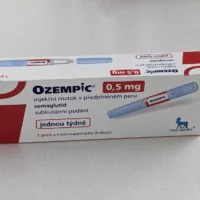In recent years, a wave of lawsuits has surged against pharmaceutical giants Eli Lilly and Novo Nordisk. Patients across the United States are alleging severe health complications from using GLP-1 agonists, including Ozempic, Wegovy, and other drugs in this class. Initially praised for their effectiveness in managing diabetes and aiding weight loss, these medications are now under intense legal scrutiny. The controversy stems from balancing the benefits of these drugs with the adverse side effects reported, which range from digestive issues to severe conditions requiring surgical intervention.
As the popularity of these drugs increases, so does concern over patient safety and whether sufficient information has been provided about the potential risks. This article will explore the growing legal battles, the personal experiences of affected individuals, and the broader implications for the pharmaceutical industry and healthcare providers.

The Appeal of GLP-1 Agonists
GLP-1 agonists have transformed diabetes management and weight loss by mimicking the glucagon-like peptide-1 hormone in the body. This hormone regulates blood sugar levels and appetite, and GLP-1 agonists enhance this action, helping people with diabetes manage their blood sugar levels while also promoting weight loss by reducing appetite.
For many individuals with diabetes, these medications represent a major breakthrough. GLP-1 agonists offer the dual benefit of controlling blood sugar levels and addressing weight management, which is often a challenge for people with type 2 diabetes. This combination of benefits has made GLP-1 agonists a preferred option for comprehensive condition management.
In addition to their role in diabetes management, GLP-1 agonists have been embraced by the weight loss community. Their ability to suppress appetite and promote satiety has made them a popular choice for those seeking to lose weight. Unlike many traditional weight loss medications, GLP-1 agonists work by tapping into the body’s natural processes of hunger regulation, which adds to their appeal.
The rapid success of GLP-1 agonists has not gone unnoticed within the pharmaceutical industry. These drugs have quickly reached blockbuster status, generating substantial revenue for companies like Eli Lilly and Novo Nordisk. Their widespread adoption reflects the growing demand for treatments that address both diabetes and obesity, two of the most pressing health challenges today.
Personal Stories of Side Effects

While GLP-1 agonists have provided significant benefits for many patients, some users have experienced severe side effects. One such case is Paulsen Bronston, who began using Ozempic to manage his diabetes. Initially hopeful, Bronston soon encountered severe digestive issues, including months of diarrhea and discomfort. His condition worsened, leading to jaundice and hospitalization, where doctors determined his gallbladder had to be removed.
Bronston’s experience is not an isolated case. Numerous patients have reported suffering similar side effects, many of which are gastrointestinal. Some, like Bronston, had to undergo surgeries such as gallbladder removal, while others experienced a condition known as gastroparesis, which impairs digestion by paralyzing the stomach. Monica Church from Michigan started Ozempic hoping to manage her diabetes, but an increased dosage led to severe nausea and stomach pain, culminating in a two-week hospitalization. Even after stopping the medication, her symptoms persisted.
Bob Tuttle’s experience paints a similar picture. After using Ozempic, he faced morning nausea and digestive issues, which escalated into an emergency hospitalization. His diagnosis of gastroparesis, a condition that severely affects digestion, has left lingering effects on his quality of life.
These personal stories reveal the darker side of GLP-1 agonists, underscoring the need for careful monitoring and clear communication between doctors and patients about potential risks. While these medications provide undeniable benefits for many, the experiences of those facing severe side effects raise critical questions about patient safety and the transparency of drug-related risks.
The Legal Battle Unfolds
The introduction of GLP-1 agonists, once celebrated for their innovative approach to diabetes and weight management, has sparked a growing legal controversy. Individuals like Paulsen Bronston and others have come forward with allegations of severe side effects linked to these medications, resulting in numerous lawsuits against Eli Lilly and Novo Nordisk.
A significant development in this legal saga is the centralization of over sixty lawsuits under U.S. District Judge Gene E.K. Pratter in Philadelphia. The plaintiffs claim that these pharmaceutical companies failed to provide adequate warnings about the potential for severe digestive side effects, including conditions like gastroparesis and gallbladder removal.
In defense, both Eli Lilly and Novo Nordisk have stood by the safety and efficacy of their products. Novo Nordisk emphasized the extensive research behind their GLP-1 drugs, noting the 13-year presence of these medications on the market. They also stressed their commitment to working closely with the U.S. Food and Drug Administration (FDA) to monitor drug safety. Eli Lilly similarly pointed to the FDA-approved labels on their products, which clearly outline potential gastrointestinal side effects.
As these lawsuits proceed, the central question will be whether the companies did enough to inform patients and healthcare providers about the risks associated with GLP-1 agonists. This legal battle highlights the tension between pharmaceutical innovation and the need for patient safety, transparency, and informed consent.
The Safety and Efficacy Debate

The rise of GLP-1 agonists has prompted a critical debate about their safety and efficacy, particularly in light of the personal stories and legal battles surrounding them. On one side, pharmaceutical companies like Eli Lilly and Novo Nordisk defend their products, citing rigorous research and FDA approvals. They emphasize that these drugs have undergone extensive testing to ensure that their benefits—such as improved blood sugar control and weight loss—outweigh the potential risks.
Eli Lilly and Novo Nordisk assert that their FDA-approved labels clearly outline the possible side effects, including gastrointestinal issues. They maintain that their commitment to patient safety is reflected in their collaboration with the FDA to continually monitor the safety profiles of these drugs.
However, the contrast between these assurances and the real-world experiences of patients who have suffered severe side effects raises serious questions. Individuals like Paulsen Bronston and Monica Church argue that the warnings provided were insufficient, leading them to suffer life-altering complications. The debate hinges on whether pharmaceutical companies adequately communicated the potential risks to patients and healthcare providers.
This debate touches on broader issues in healthcare, such as the balance between innovation and safety. While GLP-1 agonists offer tremendous benefits, especially for managing diabetes and obesity, the side effects reported by some patients suggest that a more cautious approach may be needed. Ensuring that patients are fully informed about the risks and benefits of their treatment options is crucial for maintaining trust between patients, healthcare providers, and the pharmaceutical industry.
Tips for Potential Users of GLP-1 Agonists
For individuals considering GLP-1 agonists as part of their treatment plan, it’s essential to take certain precautions to ensure their safety and the effectiveness of the medication. Here are several key tips for potential users:
1. Understand the Potential Side Effects
- Research thoroughly: Familiarize yourself with the known side effects of GLP-1 agonists by consulting reputable medical sources, including scientific publications and the official documentation provided by the drug manufacturer.
- Discuss with your healthcare provider: Speak with your doctor about the likelihood of experiencing side effects, including how severe they may be. Ask for clear explanations so you can make an informed decision.
2. Share Your Medical History
- Disclose any digestive issues: If you have a history of gastrointestinal conditions, such as irritable bowel syndrome or gallbladder problems, be sure to inform your doctor. These pre-existing conditions may increase your risk of complications with GLP-1 agonists.
- Review your current medications: Some drugs may interact negatively with GLP-1 agonists, so it’s important to share a full list of all medications, vitamins, and supplements you’re currently taking.
3. Monitor Your Health Diligently
- Keep a symptom diary: Record any changes in your health after starting the medication. Track new symptoms and how your body is responding to treatment. This information can be valuable during follow-up appointments with your doctor.
- Schedule regular check-ups: Routine medical check-ups are vital for monitoring your condition, adjusting the dosage if necessary, and ensuring the medication is working as intended without severe side effects.
4. Know When to Seek Immediate Medical Attention
- Recognize severe symptoms: Be aware of signs that require urgent medical attention, such as severe abdominal pain, persistent vomiting, or yellowing of the skin and eyes (jaundice). These symptoms may indicate serious complications.
- Have a plan: Know who to contact and where to go in case of an emergency. Ensure family members or close friends are also aware of your medical treatment, especially if serious side effects occur.
By following these guidelines, potential users of GLP-1 agonists can take proactive steps to manage their health while minimizing risks. Open communication with your healthcare provider is key to ensuring a safe and successful treatment experience.
Public and Professional Perspectives on GLP-1 Agonists

Public interest in GLP-1 agonists has been influenced by endorsements from high-profile figures, raising their profile as potential solutions for weight loss and diabetes management. However, celebrity endorsements often overlook the potential risks, creating a perception that may downplay serious side effects.
In the medical community, experts urge caution, advocating for individualized assessments before prescribing these drugs. Healthcare providers emphasize the importance of educating patients about potential risks and ensuring they are aware of adverse symptoms. There is also concern that the communication from pharmaceutical companies about these risks may need improvement to fully inform both doctors and patients.
The Road Ahead for GLP-1 Agonist Litigation
As lawsuits against Eli Lilly and Novo Nordisk progress, the outcomes may lead to stricter guidelines on drug testing and marketing. Pharmaceutical companies could face increased pressure to provide clearer warnings about potential side effects, especially for long-term users.
Regulatory bodies like the FDA may implement tougher protocols for monitoring drug safety, ensuring that risks are identified earlier. For patients, the lawsuits offer a path toward accountability and improved safety measures, which could ensure that future users of GLP-1 agonists are better informed and protected.
Balancing Benefits and Risks

The situation surrounding GLP-1 agonists reminds us that while modern medicine can offer incredible benefits, it’s important to stay aware of the potential risks. These drugs have been a game-changer for managing diabetes and weight loss, but the serious side effects some patients are experiencing can’t be ignored.
As these lawsuits move forward, we might see changes in how pharmaceutical companies communicate these risks and how doctors prescribe these medications. In the end, the goal is simple: making sure patients are fully informed and protected. By being transparent and careful, we can ensure that treatments like GLP-1 agonists are used in the safest, most effective way possible.



